" SUSTAINABLE DRAINAGE"
Flooding is a major concern for the people and local authorities in Da Nang City. Since the beginning of the rainy season (September) until now, Da Nang City has experienced two severe floods, and the city authorities have held many meetings to analyze the causes.
Mr. Le Trung Chinh, Chairman of the People's Committee of Da Nang City, assessed that although 3 peak campaigns have been launched, the work of dredging and clearing inlets and drainage culverts within the scope of decentralized management has not yet been completed; units have mostly focused on prioritizing dredging and clearing in flooded areas.
To solve flooding, Mr. Le Trung Chinh requested the People's Committees of districts, drainage and wastewater treatment companies, and investors to improve the efficiency of clearing inlets, water collection ditches, and dredging sewers.
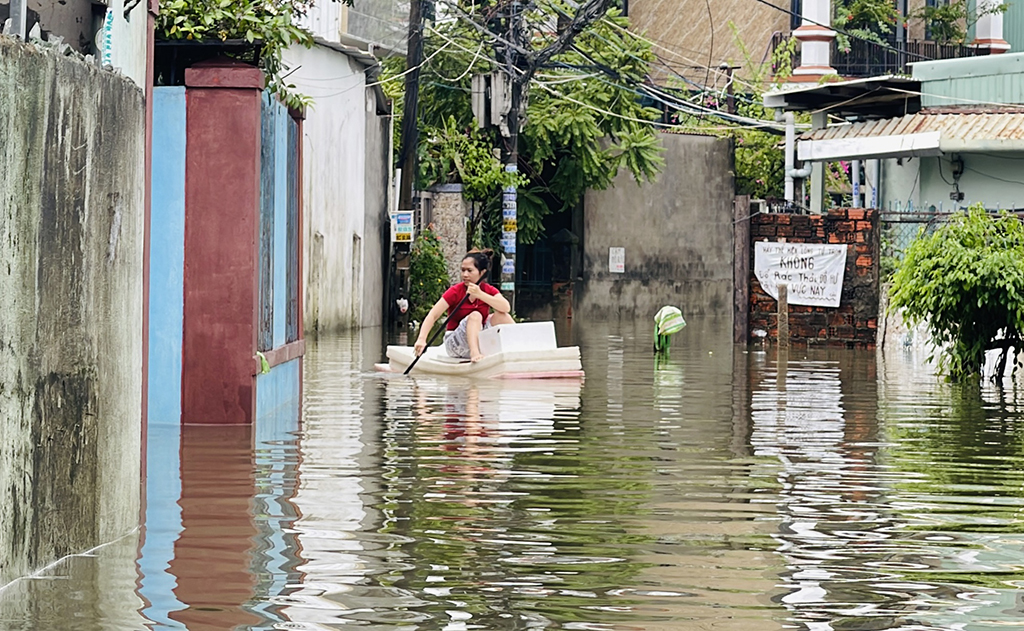
Some people have to use buoys to move around in residential areas in Hoa Khanh Nam Ward (Da Nang).
According to Mr. Le Tung Lam, Secretary of the District Party Committee, Head of the Delegation of the People's Council of Da Nang City, Thanh Khe District, the flooding situation is due to 4 main reasons: inadequate urban planning, renovation and development; the progress of renovating the old system as well as building new drainage systems is slower than the speed of urban development; the transformation of awareness and actions regarding the drainage system to respond to climate change and extreme natural disasters has not yet met requirements; resources and capacity for urban management, especially the operation of the drainage system, are still limited.
To solve this problem, resources and a long time are needed. According to the urgent plan for 5 years, Da Nang City needs to invest 5,500 billion VND; but in the immediate future, priority should be given to handling localized flooding in the central urban areas of the city and old residential areas with degraded drainage systems.
"To meet urban drainage requirements in a situation of limited resources, it is necessary to follow the direction of sustainable drainage (slow drainage). It is necessary to build tanks, reservoirs, sewers, and regulating wells in areas where there are no more ponds or lakes to regulate water, water storage space using public and private land, arrange underground and open space, improve sidewalks to increase permeability, have a plan and decentralize effective drainage management. Accept some flooded areas but at an acceptable level, equip with response scenarios with simple content, and have flood maps for each household to easily implement," said Mr. Le Tung Lam.
C FLOOD PREVENTION IN INNER CITY, A DIFFICULT PROBLEM
In Quang Nam , a leader of the People's Committee of Tam Ky City said that since 2018, the flooding situation in Tam Ky urban area has increased in both frequency, level and area. The objective reason is that the amount of rain is too heavy, causing the amount of foreign water from Thang Binh and Phu Ninh districts to flow into the Ban Thach, Ky Phu, Tam Ky and Truong Giang rivers to be too large. The subjective reason is that the drainage system is currently being upgraded and expanded downstream but has not been completed yet.
At the recent workshop on proposed solutions to cope with flooding in Tam Ky City and surrounding areas, Associate Professor Dr. Nguyen Chi Cong (University of Technology - University of Danang) said that Tam Ky City has seen two types of flooding in recent years. One is widespread flooding, due to the rising water levels of Tam Ky and Ban Thach rivers, causing inner-city water to not drain into the river, even with reverse flow. The other is inner-city flooding, even though the water levels of Ban Thach and Tam Ky rivers are low, inner-city water still cannot drain into the river. In addition, the flood drainage capacity of the river system is also one of the causes.
Associate Professor, Dr. Cong said that the main cause was determined to be extremely heavy rainfall, but the drainage system did not respond, so the water in the inner city drained slowly, causing flooding. To improve flood drainage capacity, it is necessary to renovate and upgrade the drainage system for the inner city, lower the water level of Ban Thach and Tam Ky rivers so that the inner city water drains quickly. In addition, it is necessary to divert flood from Ban Thach river to Truong Giang river and drain flood from Truong Giang river to the sea. In addition, it is necessary to clear underground sewers and clear the flow of drainage systems in the inner city and on the sub-basins of Ban Thach river.
In Thua Thien- Hue , in recent years, when mentioning "lowland areas", Hue city residents immediately think of the urban areas in the southeast of the city. Previously, this was a rice field area, but in the past 5 years, it has been planned and developed as an urban area with a series of social housing projects, luxury apartments, townhouse projects, commercial centers, etc.
According to Thanh Nien reporters' records through recent floods (in 2022 and 2023), just one heavy rain can cause the southeastern roads of Hue City such as Hoang Lanh, Vu Thang, Nguyen Lo Trach (Xuan Phu Ward), An Cuu City (An Dong Ward) to be flooded from 0.5 - 0.8 m, in some places more than 1 m.
According to Mr. Nguyen Tri Dam (resident of Xuan Phu Ward), the upgrading, expansion and height increase of To Huu and Vo Nguyen Giap streets is like a "dyke" to block water, turning this new urban area into a low-lying area that is often flooded.
In addition, Mr. Nguyen Van Hung, Director of the Hue Regional Hydrometeorological Station, acknowledged that urban flooding was partly due to the impact of extreme weather, heavy and prolonged rain. Specifically, during the recent rain (October 12-14), the rainfall measured in Phu Oc (Huong Tra Town) was commonly up to 147 mm/hour. "This is a very large amount of rain, previously the largest rainfall was only about 40-50 mm/hour," Mr. Hung said.
Elevation in Da Nang does not match the elevation of the national topographic map?
Not only this time, but every time there is not too heavy rain, Da Nang is "submerged in a sea of water". Therefore, Professor Dr. Vu Trong Hong, former Deputy Minister of Agriculture and Rural Development, said that Da Nang needs to pay close attention because the rain developments are very complicated.
"I noticed that the elevation in Da Nang seems to be inconsistent with the elevation on the national topographic map. We need to re-check the elevation in this city because the rain is not heavy but many places are still flooded," said Professor Hong.
According to Professor Hong, Da Nang is very close to the river, close to the sea, the population is sparse but the water in the city cannot drain out, most likely the elevation here is incorrect, lower than the river and sea, so this situation occurs.
Dinh Huy
The cross section of the sewer pipe is only one factor.
A representative of the Ministry of Construction said that in response to climate change, the Ministry of Construction has proactively issued amendments and updates to increase the cross-section of drainage pipes in urban areas.
Architect Pham Thanh Tung, an expert in urban planning and architecture, believes that flooding during heavy rains in many cities cannot be attributed solely to the design of small sewer pipes. Sewer pipe cross-sections should only be considered as a factor when studying urban flooding during heavy rains.
According to Mr. Tung, to find out the reason why many cities are flooded during heavy rains, it is necessary to consider the characteristics of each urban area and each area where the water rises due to not being able to drain the rain quickly enough. At the same time, it is necessary to review the quality of urban planning when recently even new urban areas have been flooded during heavy rains, not just areas that have been established for a long time.
"The phenomenon of dumping waste oil and grease into sewers, littering, especially throwing plastic bags haphazardly into canals, ditches, ponds, lakes, sewers, etc., is still very common. Poor environmental hygiene awareness greatly contributes to flooding during heavy rains," said Mr. Tung.
According to Mr. Tung, if we only attribute the cross-section of drainage pipes in small urban areas to raise standards, it will be easy to get caught up in the waste of resources. "It is necessary to thoroughly clarify the causes of flooding in each city when it rains heavily, from which we will find appropriate solutions," Mr. Tung said.
Le Quan
Source link


![[Photo] President Luong Cuong holds talks with South African President Matamela Cyril Ramaphosa](https://vphoto.vietnam.vn/thumb/1200x675/vietnam/resource/IMAGE/2025/10/23/1761221878741_ndo_br_1-8416-jpg.webp)

![[Photo] Prime Minister Pham Minh Chinh chairs meeting on railway projects](https://vphoto.vietnam.vn/thumb/1200x675/vietnam/resource/IMAGE/2025/10/23/1761206277171_dsc-9703-jpg.webp)
![[Photo] Prime Minister Pham Minh Chinh meets with South African President Matamela Cyril Ramaphosa](https://vphoto.vietnam.vn/thumb/1200x675/vietnam/resource/IMAGE/2025/10/23/1761226081024_dsc-9845-jpg.webp)

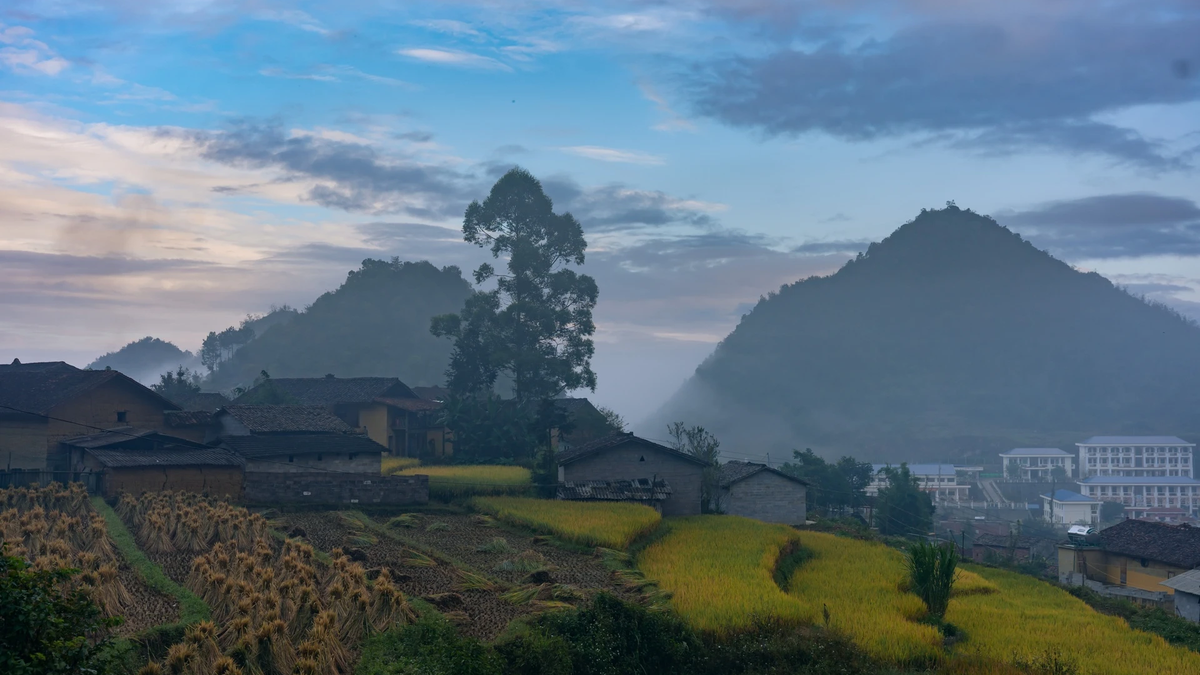


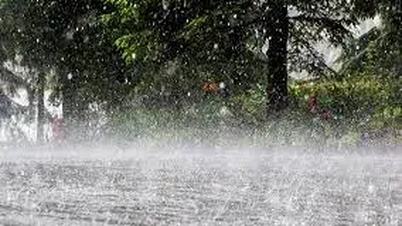

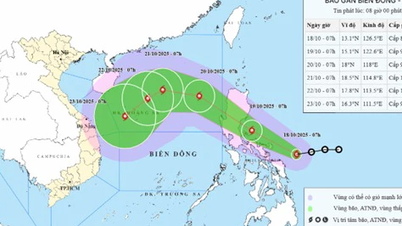



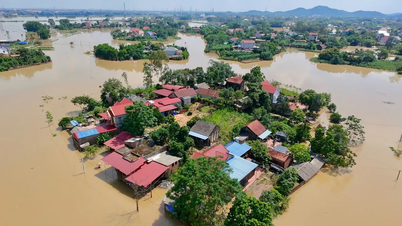
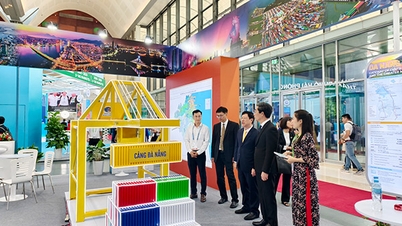





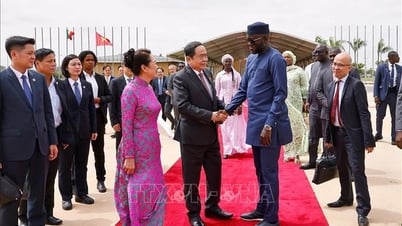



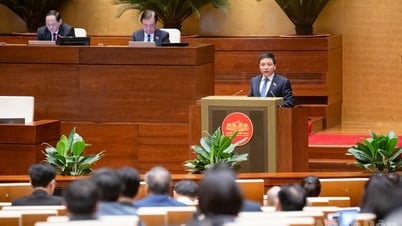
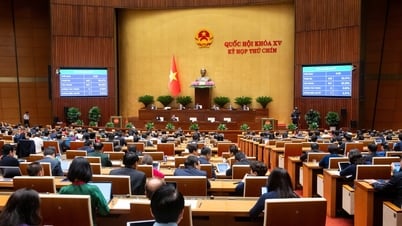





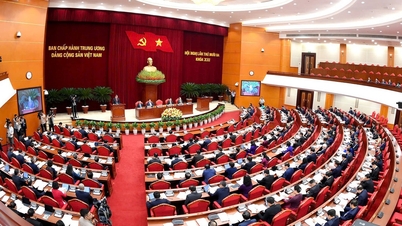
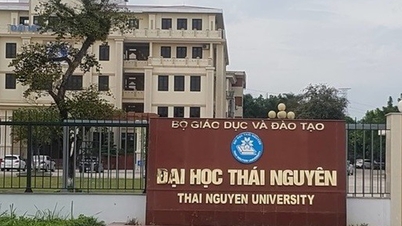

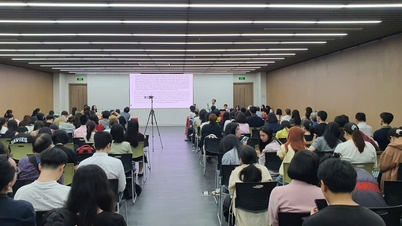
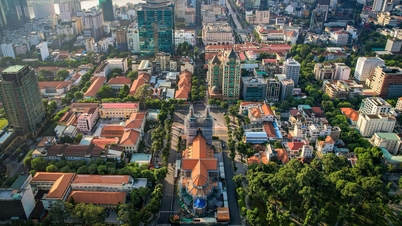





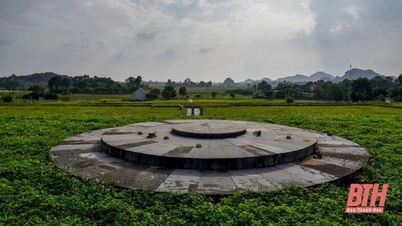





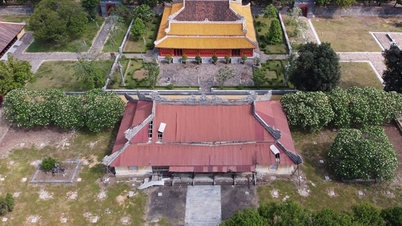


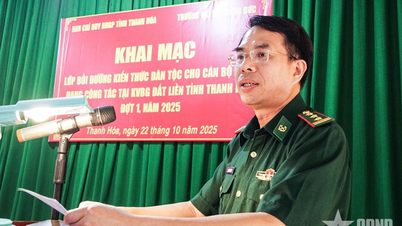














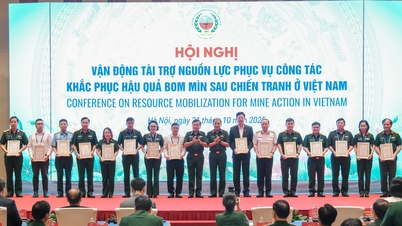







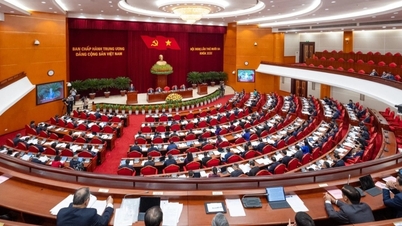


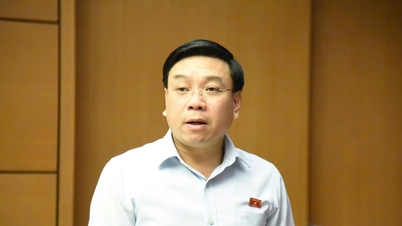




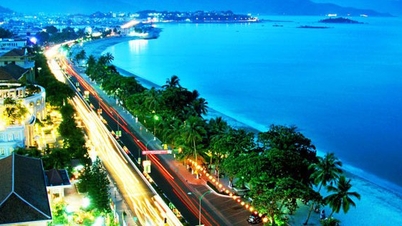

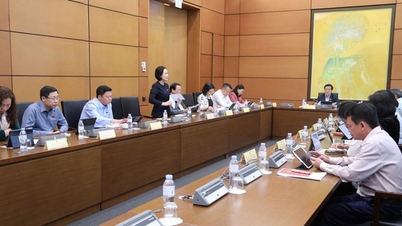


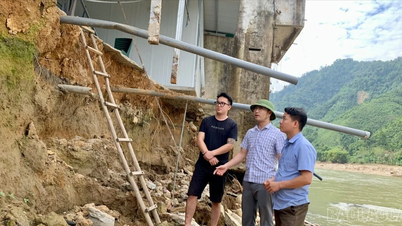






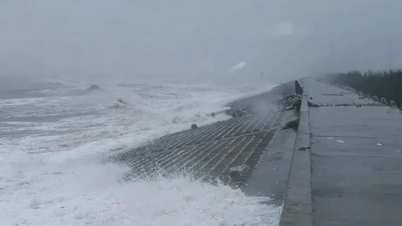













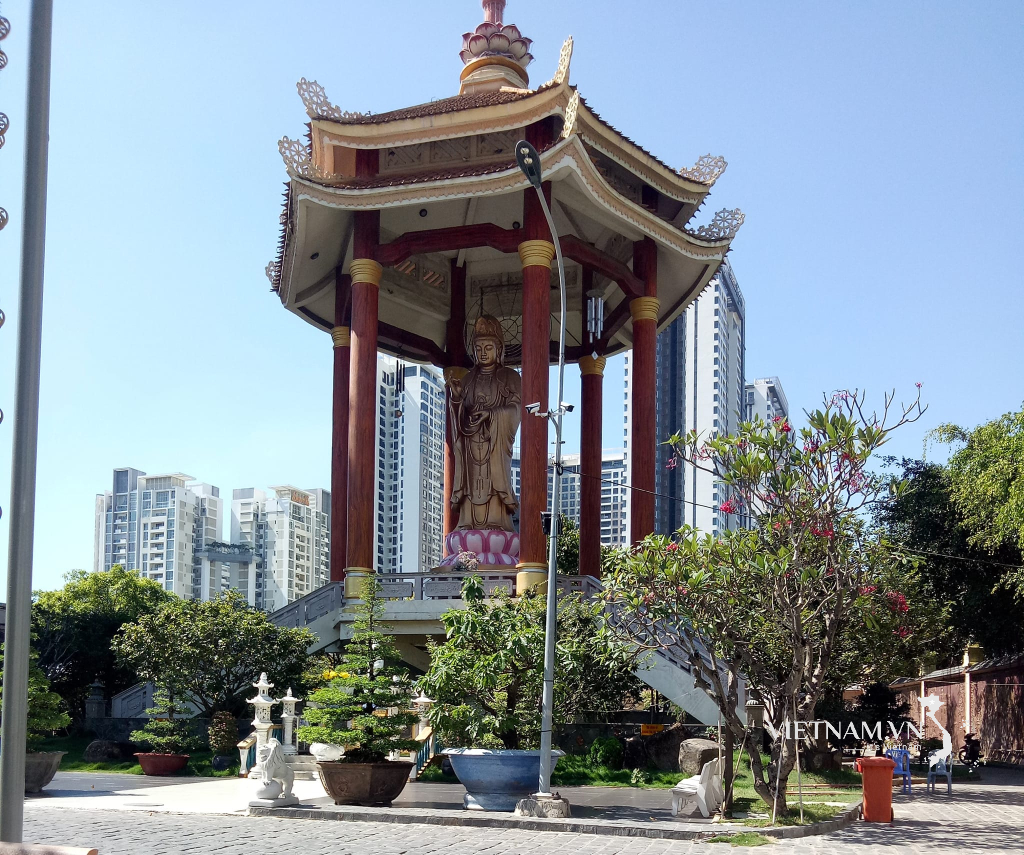
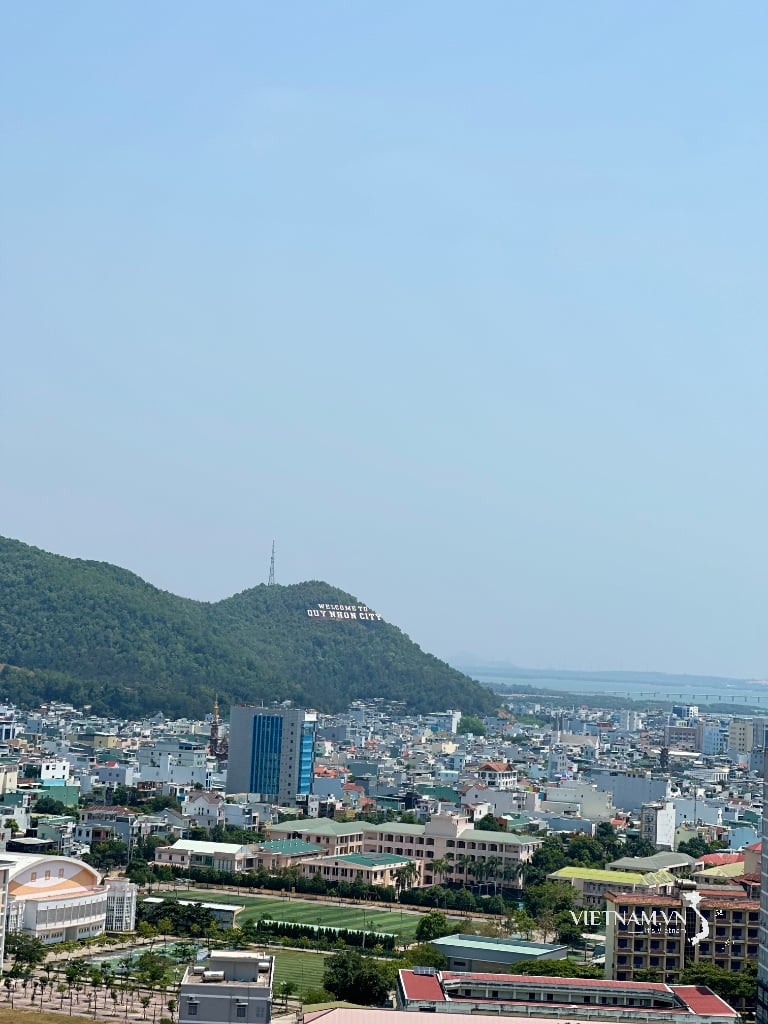

Comment (0)